The Ettore Bugatti Le Mans & Mont Ventoux racing car 1912 5 LITRE CHAIN DRIVE BUGATTI RACING CAR Registration No. AM 2678 Car No. 471 Black with black leather seat. Engine: four-cylinder 100x160mm. 5,027cc, five bearing crankshaft, single overhead camshaft, 3 valves per cylinder; Transmission: chain drive; Gearbox: four-speed and reverse; Suspension: twin pairs of front springs and reversed quarter elliptics to the rear; Brakes: rear wheel brakes (handbrake) with additional transmission brake operated by the foot pedal; Wheels: wire spoked with 820x120mm tyres; Right hand drive. In 1910, aged 28, Ettore Bugatti resigned his position at the Deutz works in Cologne and moved to Alsace renting an old dye works in Molsheim where he began making his own automobiles. He took with him a prototype car of 1,208cc which he had built in his basement workshop in Cologne and which was to become the first Pur Sang Bugatti, the Type 10. He also brought with him another much more powerful car, a five-litre overhead valve design with three valves per cylinder (two inlet, one exhaust) and chain drive, which he later confirmed to Colonel Giles of the Bugatti Owners Club he had started building in 1908. Bugatti once drove a five-litre car in the 1910 Prince Henry Trial and there is strong evidence that he had used this engine in a Deutz chassis. Bugatti's car did not appear in its final form for another two years as it was his own competition car and therefore not intended for production. He had to wait for a while until his new company was established before it could be developed. In 1912 Bugatti drove his five-litre chain-driven car, equipped with an aerodynamic cowled two seater bodywork - distinguishable by its pointed tail - in a race at Le Mans and later at the Mont Ventoux Hill Climb where he won his class and finished fourth overall. The history of this important car, number 471 was largely confirmed when Nigel Arnold-Forster took over ownership from Peter Hampton in 1974. The number of 471 is stamped on the near-side rear engine mounting and it had always been believed that this was indeed the pointed tail racing car driven by Ettore at Mont Ventoux in 1912. The Hugh Conway factory records make it clear that this is the first of the five-litre cars (and therefore three earlier than "Black Bess", number 474) and the only one to have been made in 1912. Nigel Arnold-Forster painstakingly rebuilt the car and this is fully recorded in "Bugantics", Summer 1977, Vol 40 No. 2. The engine has a bore and stroke of 100x160mm. giving a capacity of 5,027cc and uses a five bearing crankshaft and an overhead camshaft driven off the front of the engine by a vertical shaft operating two inlet and one exhaust valve per cylinder. Totally enclosed, the whole design is remarkable for its period and has more in common with the Grand Prix Bugattis of the Twenties than the contemporary Bugatti production car engines. The multi-plate clutch of typical Bugatti design had been perfected for Deutz and the Bugatti designed four-speed gearbox is a work of art in itself. The final drive by chain is virtually identical to the design for Deutz except that the semi-elliptic springs were replaced by reversed quarter elliptics, a classic Bugatti feature but not used for production cars until 1913. A transmission brake was fitted to the rear of the gearbox and a handbrake for the rear wheels which are of the beaded edge type fitted with 820x120mm tyres. 471 stayed at Molsheim until the outbreak of war in 1914 when Bugatti sold it to the Duke of Bavaria who removed the pointed tail racing body and replaced it with a touring body. During the twenties the car passed to Bruno Martinelli of Chiasso, a Swiss champion motor cycle racer who was killed in 1936 at a race in Geneva. The car was then bought by Colonel Giles (who at that time owned 474, the Garros car known by then as "Black Bess"). Both cars subsequently became the property of C.W.P. Hampton who later parted with
The Ettore Bugatti Le Mans & Mont Ventoux racing car 1912 5 LITRE CHAIN DRIVE BUGATTI RACING CAR Registration No. AM 2678 Car No. 471 Black with black leather seat. Engine: four-cylinder 100x160mm. 5,027cc, five bearing crankshaft, single overhead camshaft, 3 valves per cylinder; Transmission: chain drive; Gearbox: four-speed and reverse; Suspension: twin pairs of front springs and reversed quarter elliptics to the rear; Brakes: rear wheel brakes (handbrake) with additional transmission brake operated by the foot pedal; Wheels: wire spoked with 820x120mm tyres; Right hand drive. In 1910, aged 28, Ettore Bugatti resigned his position at the Deutz works in Cologne and moved to Alsace renting an old dye works in Molsheim where he began making his own automobiles. He took with him a prototype car of 1,208cc which he had built in his basement workshop in Cologne and which was to become the first Pur Sang Bugatti, the Type 10. He also brought with him another much more powerful car, a five-litre overhead valve design with three valves per cylinder (two inlet, one exhaust) and chain drive, which he later confirmed to Colonel Giles of the Bugatti Owners Club he had started building in 1908. Bugatti once drove a five-litre car in the 1910 Prince Henry Trial and there is strong evidence that he had used this engine in a Deutz chassis. Bugatti's car did not appear in its final form for another two years as it was his own competition car and therefore not intended for production. He had to wait for a while until his new company was established before it could be developed. In 1912 Bugatti drove his five-litre chain-driven car, equipped with an aerodynamic cowled two seater bodywork - distinguishable by its pointed tail - in a race at Le Mans and later at the Mont Ventoux Hill Climb where he won his class and finished fourth overall. The history of this important car, number 471 was largely confirmed when Nigel Arnold-Forster took over ownership from Peter Hampton in 1974. The number of 471 is stamped on the near-side rear engine mounting and it had always been believed that this was indeed the pointed tail racing car driven by Ettore at Mont Ventoux in 1912. The Hugh Conway factory records make it clear that this is the first of the five-litre cars (and therefore three earlier than "Black Bess", number 474) and the only one to have been made in 1912. Nigel Arnold-Forster painstakingly rebuilt the car and this is fully recorded in "Bugantics", Summer 1977, Vol 40 No. 2. The engine has a bore and stroke of 100x160mm. giving a capacity of 5,027cc and uses a five bearing crankshaft and an overhead camshaft driven off the front of the engine by a vertical shaft operating two inlet and one exhaust valve per cylinder. Totally enclosed, the whole design is remarkable for its period and has more in common with the Grand Prix Bugattis of the Twenties than the contemporary Bugatti production car engines. The multi-plate clutch of typical Bugatti design had been perfected for Deutz and the Bugatti designed four-speed gearbox is a work of art in itself. The final drive by chain is virtually identical to the design for Deutz except that the semi-elliptic springs were replaced by reversed quarter elliptics, a classic Bugatti feature but not used for production cars until 1913. A transmission brake was fitted to the rear of the gearbox and a handbrake for the rear wheels which are of the beaded edge type fitted with 820x120mm tyres. 471 stayed at Molsheim until the outbreak of war in 1914 when Bugatti sold it to the Duke of Bavaria who removed the pointed tail racing body and replaced it with a touring body. During the twenties the car passed to Bruno Martinelli of Chiasso, a Swiss champion motor cycle racer who was killed in 1936 at a race in Geneva. The car was then bought by Colonel Giles (who at that time owned 474, the Garros car known by then as "Black Bess"). Both cars subsequently became the property of C.W.P. Hampton who later parted with




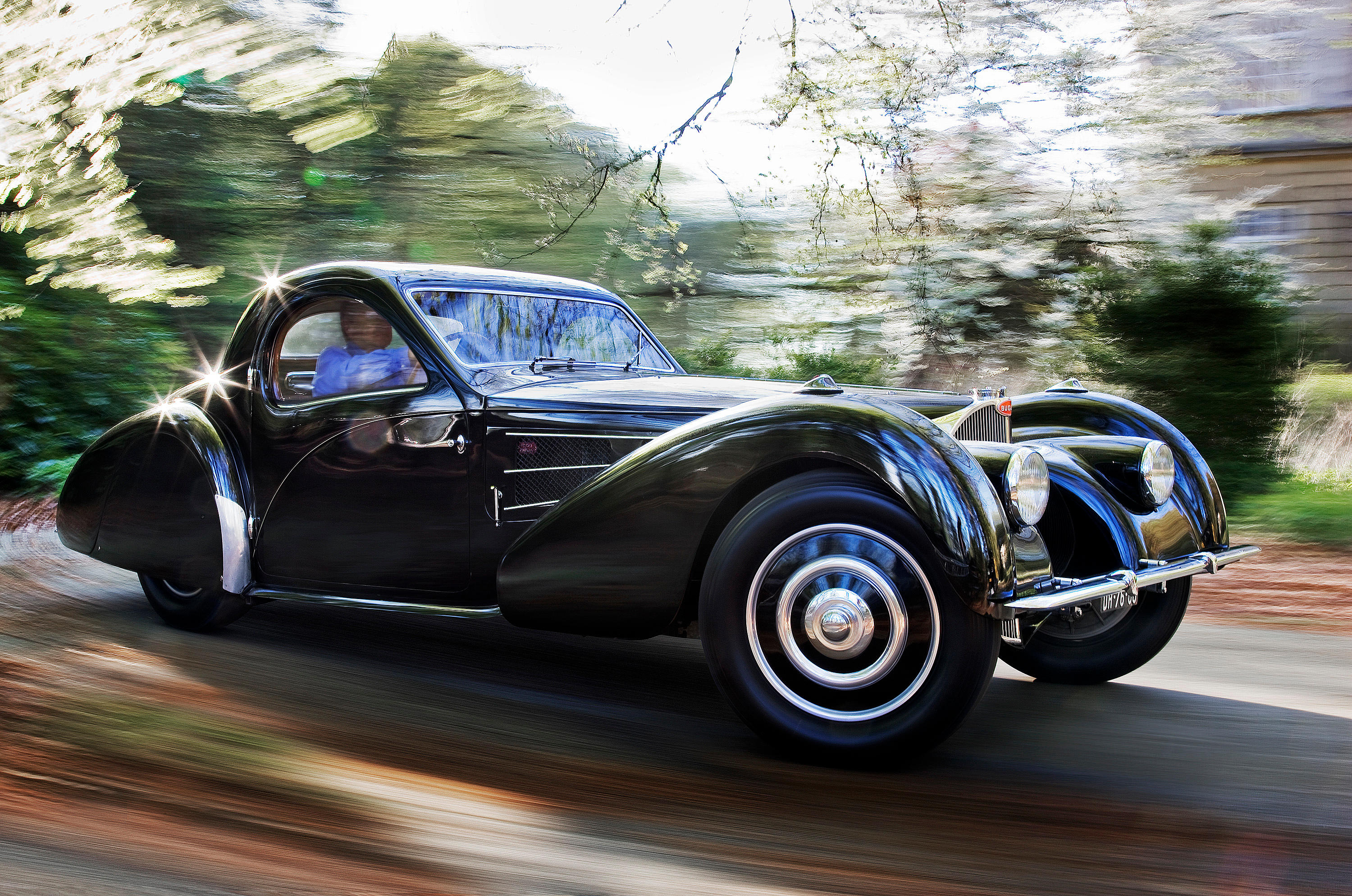




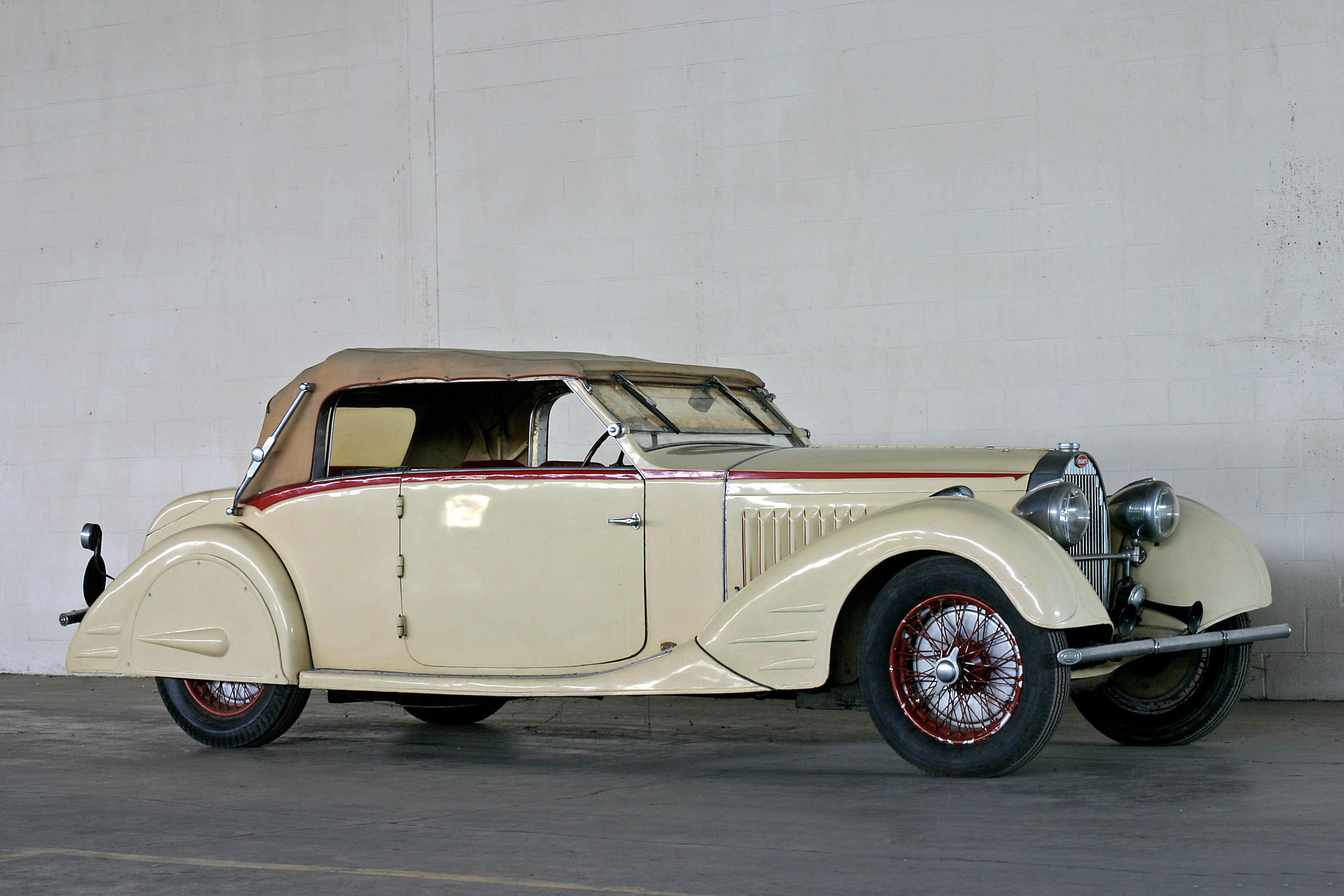

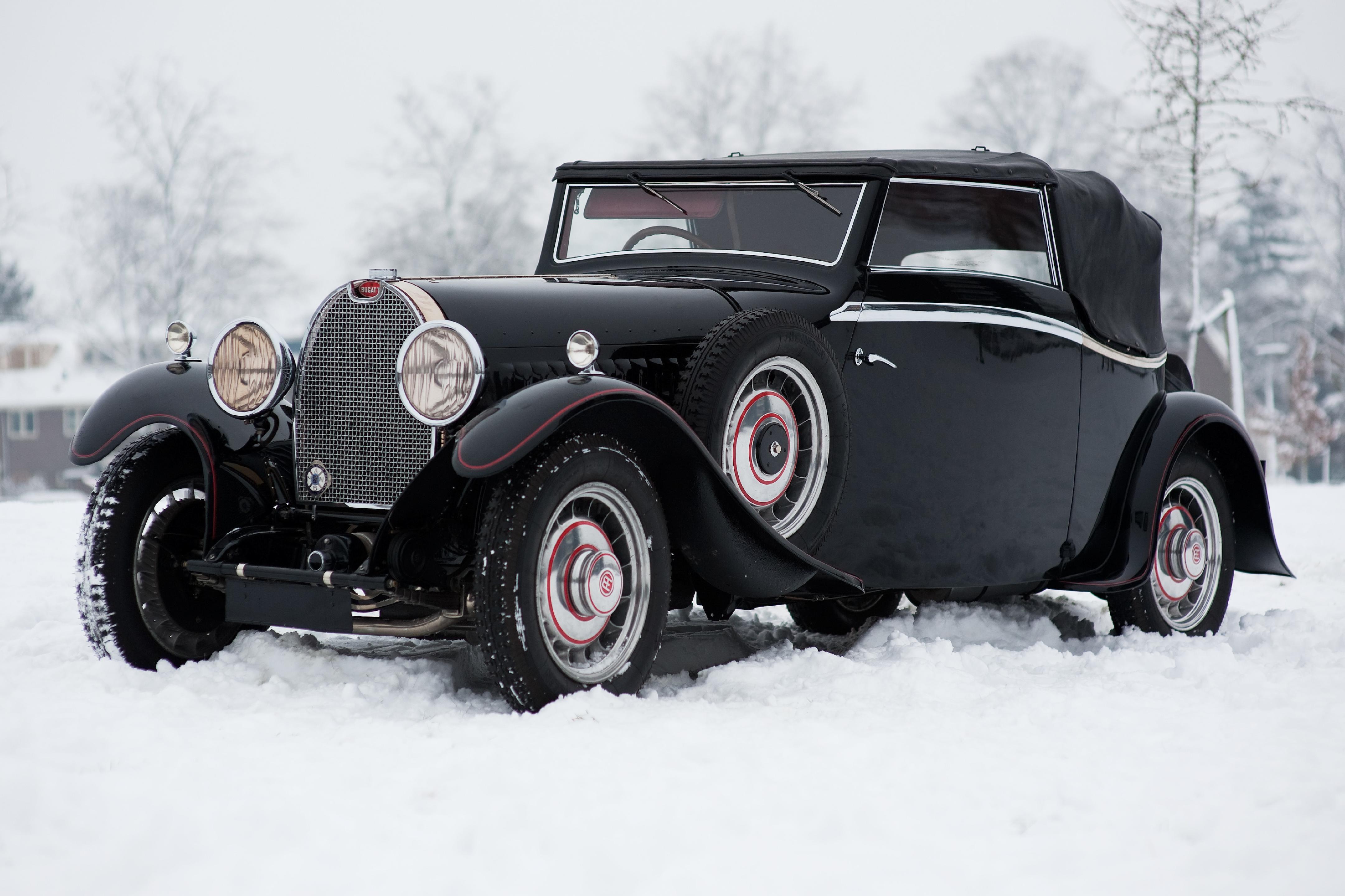

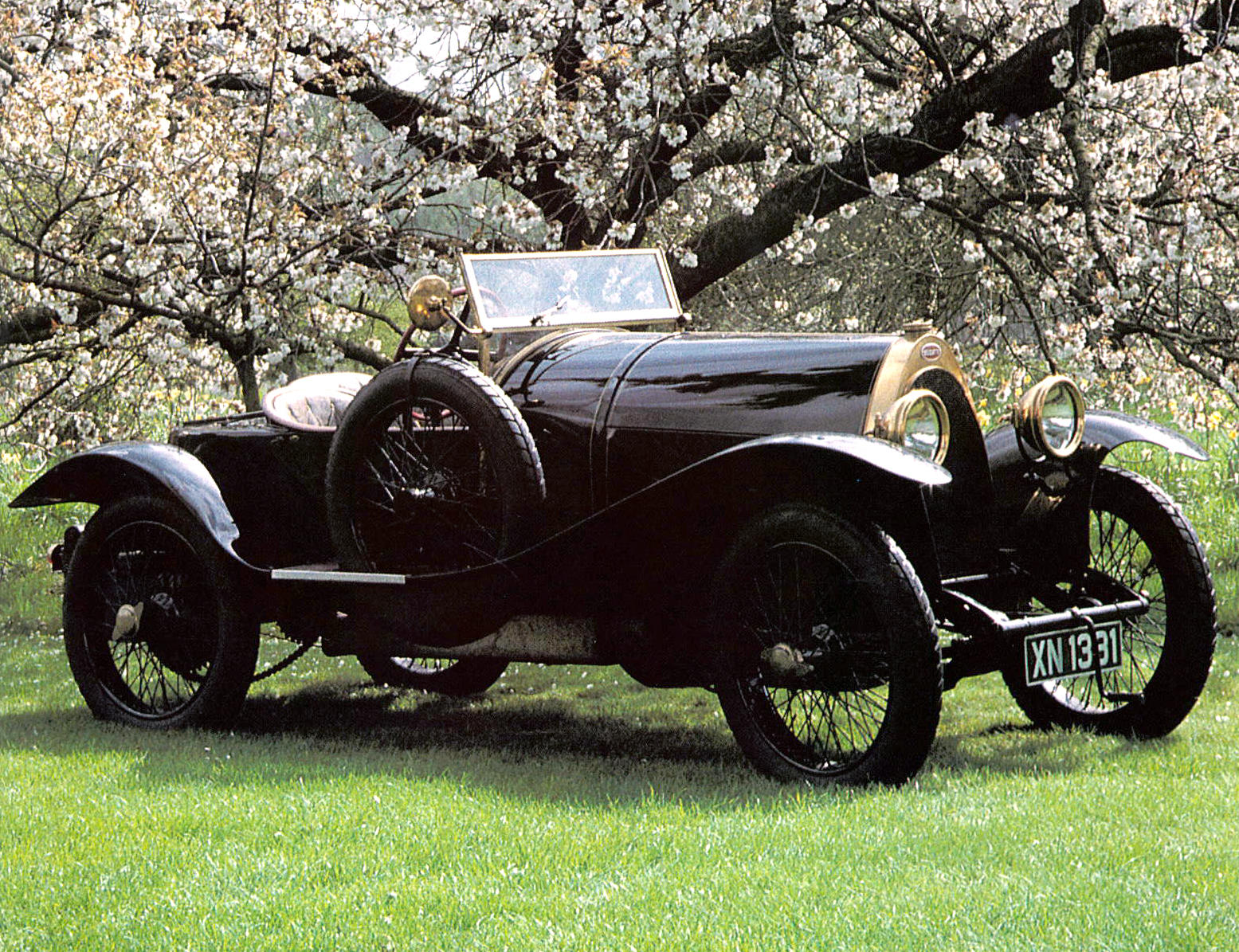
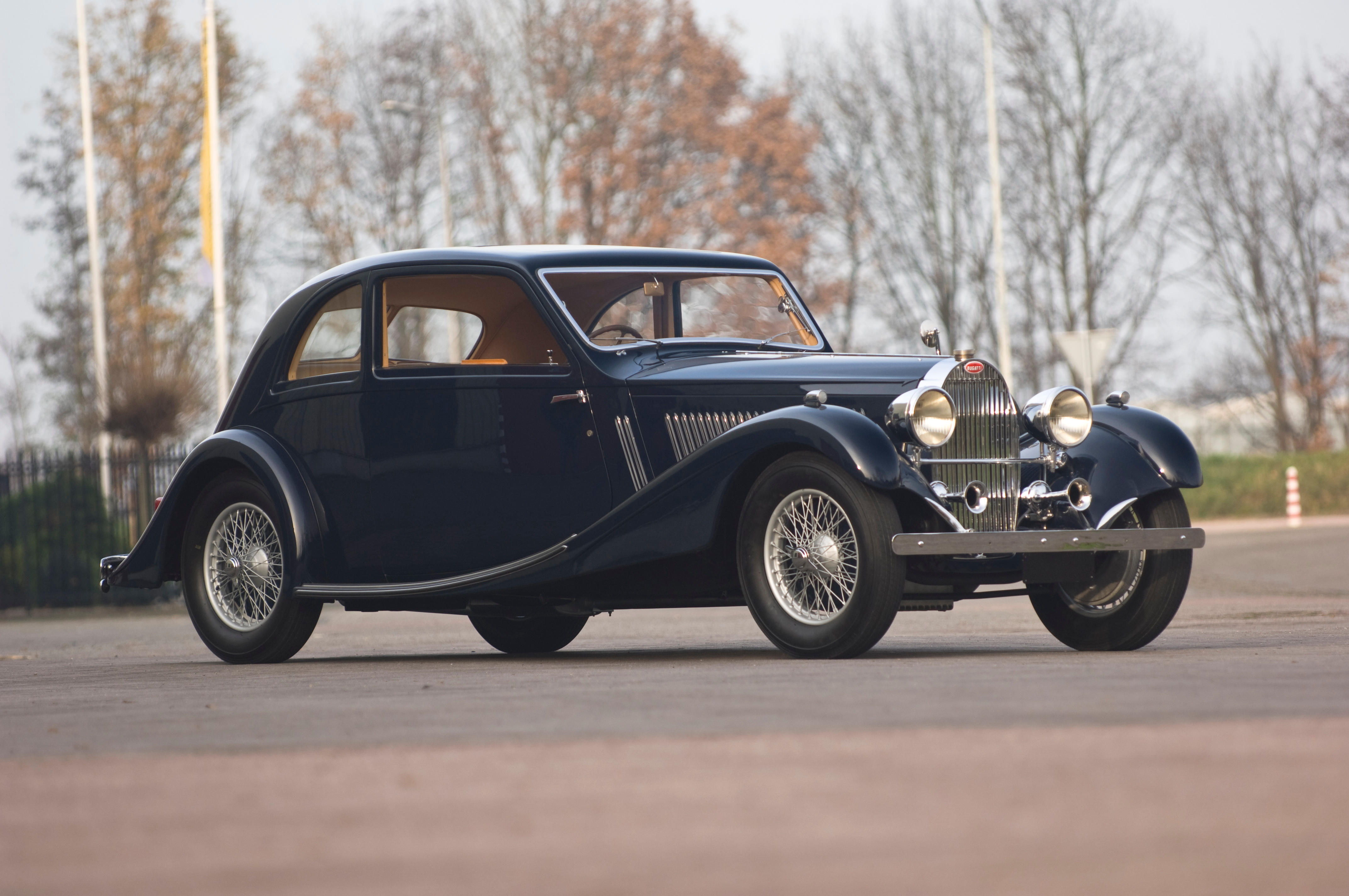
Testen Sie LotSearch und seine Premium-Features 7 Tage - ohne Kosten!
Lassen Sie sich automatisch über neue Objekte in kommenden Auktionen benachrichtigen.
Suchauftrag anlegen